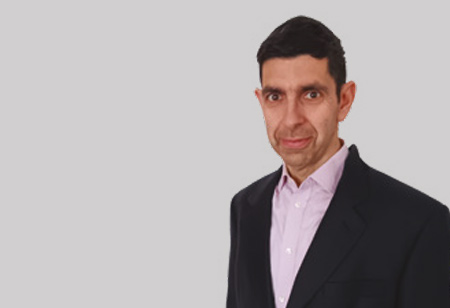THANK YOU FOR SUBSCRIBING

The Art Of Bridging The Gap Between Technical Expertise And Regulatory Intelligence
Stefanie Hirsch, Chief Sustainability & Quality Officer - Member Of The Executive Board, Drägerwerk Ag & Co. Kgaa (Dräger)

 Stefanie Hirsch, Chief Sustainability & Quality Officer - Member Of The Executive Board, Drägerwerk Ag & Co. Kgaa (Dräger)
Stefanie Hirsch, Chief Sustainability & Quality Officer - Member Of The Executive Board, Drägerwerk Ag & Co. Kgaa (Dräger)Stefanie Hirsch is the Chief Sustainability & Quality Officer - Member of the Executive Board at Drägerwerk AG & Co. KGaA (Dräger). With over 20 years in healthcare, she oversees the company’s global Quality Management System and regulatory strategies for medical devices. Her extensive experience spans Quality, Regulatory Affairs, Compliance, Project Management, Operations and R&D. Passionate about contributing to health and well-being, Stefanie embraces a generalist approach to leadership, constantly learning in today’s ever-changing landscape. She is driven to share her insights with emerging leaders, especially women, advocating for diverse perspectives to foster continuous improvement.
Through this interview, Hirsch discusses the critical importance of having an integrated, proactive approach to staying ahead of constantly evolving regulatory requirements and technical demands in the medical device industry.
How Do You Establish And Maintain A Robust Quality Management System Within Healthcare Operations, Ensuring Compliance With Regulatory Standards?
Our people are at the core of our success–a well-trained and competent staff across our headquarters, manufacturing sites and subsidiaries. They are proficient in applicable standards and requirements and leverage their expertise to stay ahead of evolving environments. We continuously monitor our markets to identify relevant changes and integrate them into our processes.
We employ an integrated management system beyond quality, encompassing external requirements from related sectors like ISO 14001 and 45001. This single source of truth ensures everyone in the company can access applicable requirements, which we then integrate into our processes.
Our global quality system is underpinned by standards, best practices and global process owners who establish unified standards. These are then adopted by our sites and subsidiaries, allowing for localised and harmonised applications while maintaining standardisation where necessary. This approach gives us the best of both worlds–consistency where it makes sense while providing the flexibility to adapt to local settings and requirements as needed.
Can You Share Experiences From One Of The Project Initiatives You Recently Participated In?
Over the past three to four years, we embarked on a journey to identify and implement a new business process management tool. Our previous integrated management system relied more on a repository-based database that our subsidiaries could access to look up their processes.
In 2021, we replaced this with a global cloud-based business process management tool, rolled out in waves to all our connected sites and subsidiaries over the past year. This transition provides us with a single source of truth, utilising data-based, interconnected process descriptions rather than document-based ones. This digital and interactive approach allows for greater flexibility in linking and following practices across connected processes.
“Our global quality system is underpinned by standards, best practices and global process owners who establish unified standards. These are then adopted by our sites and subsidiaries, allowing for localised and harmonised applications while maintaining standardisation where necessary”
This business process management application lays the foundation for better measurement and transparency by integrating key performance indicators for these processes down the road. It’s a true upgrade from the classical way of documenting processes in a document-based format, enabling us to be more agile and data-driven in our process management.
What Are Some Of The Major Challenges In Your Business That Current Services Cannot Provide An Optimal Solution For?
The regulatory landscape, as everyone in the industry knows and suffers from, is constantly evolving and becoming increasingly complex. While there were initial hopes that harmonisation would simplify matters, we continue to face an influx of new regulations and topics being governed. The need for constant change, whether to products or processes, has become a significant part of our everyday business lives.
One major technical area that has rapidly expanded over the past five years is cybersecurity requirements, and for good reason. With heightened risks and vulnerabilities in the medical field, companies must protect their products from cyber-attacks and hacking attempts. Healthcare providers face the same challenge of maintaining cybersecurity. Similar to how we routinely update our smartphones and cars, it has become a routine necessity for medical devices employing software.
However, this presents its own set of challenges. First, there’s the physical aspect of accessing devices to perform these updates, which can be difficult for healthcare providers managing their existing equipment. Then, there are contradicting hurdles like data protection, accessibility and interoperability between devices that manufacturers must overcome. It’s not just one requirement we face today but rather an interconnected web of demands that necessitates competent staff and a robust system for constant reflection and adaptation.
Another significant topic is hygienic processing and biocompatibility. The COVID-19 pandemic brought disinfection and infection prevention control to the forefront of public awareness. However, this has long been routine practice for healthcare settings, amplified by the increasing presence of antibiotic-resistant bacteria globally. The need for new agents and procedures to ensure the hygienic processing of medical devices has become crucial.
This places a burden on product development and design. Surfaces and materials must be sustainable while enabling routine hygienic processing that aligns with current environmental requirements. Managing these technical challenges in sync has become increasingly critical for manufacturers.
The regulatory world’s complexities continue to expand, demanding constant adaptation across cybersecurity, hygienic processing, biocompatibility and more–a reality that manufacturers must proactively address.
Is There A Piece Of Advice You Would Extend To Professionals In Roles Similar To Yours, Particularly Focusing On Areas Of Quality And Regulatory Affairs?
A strong network and robust regulatory intelligence go a long way in navigating this landscape. Enabling our internal staff to develop external probes and networks is invaluable. From my experience, it’s counterproductive to leave the understanding of the external landscape solely to the regulatory affairs or standards management teams.
True success lies in having the technical expertise and comprehension of how these topics evolve in the regulated world and reside within the same teams closest to the value chain. This proximity ensures short organisational communication chains, allowing for a tighter feedback loop between the evolving external requirements and our internal processes.
By fostering a culture where our subject matter experts actively engage with external networks and stay attuned to regulatory developments, we can maintain a pulse on emerging trends and swiftly adapt. This integrated approach, which bridges technical knowledge with regulatory intelligence, is crucial for staying ahead of the curve in an increasingly complex environment.
Read Also






















ON THE DECK